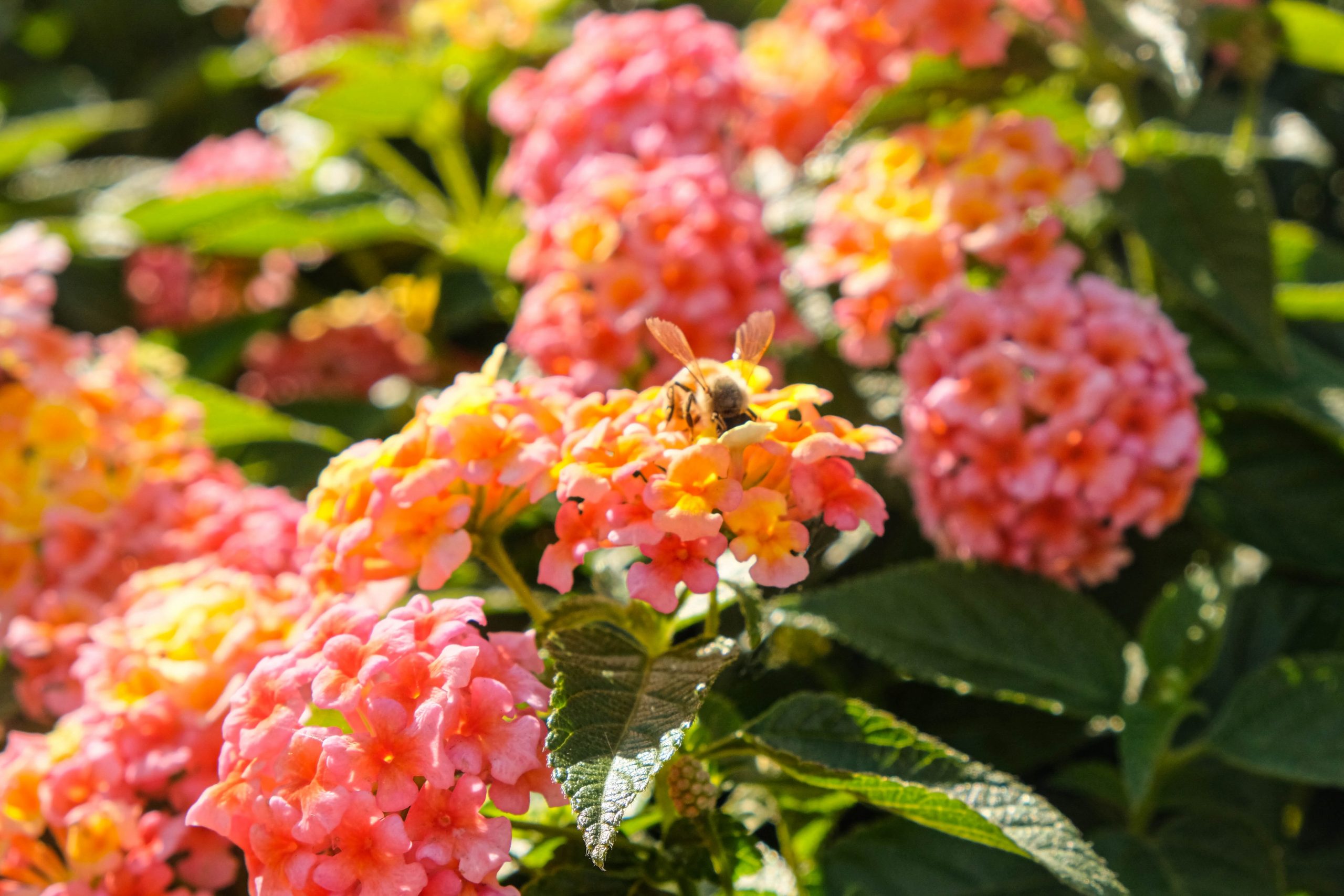March EcoTip: BPA’s 10 tips for starting a pollinator garden

As many of you may know, pollinator plants play a crucial role in supporting the lives of pollinators such as bats, bumblebees, and hummingbirds alike. Not only this, but pollinators are a very important part of our ecosystem and make it so that many of the foods we eat (such as almonds, apples and avocados) make it to our plates. With all they do for us, repaying the favor and planting pollinator-friendly plants in our gardens is a great way to thank the pollinators who make it so we get the nourishment we need to survive and thrive! Luckily, our friends at BPA put together 10 tips for starting your pollinator garden. Read on for some of their great tips and tricks about starting a pollinator-friendly garden!
Planting a garden full of native flora helps local pollinators by restoring lost habitat, supporting a balanced ecosystem and by providing shelter, nesting areas and diverse food sources. Follow these tips from BPA’s Pollinator Working Group to start your own pollinator garden.
10 tips for starting your pollinator garden
- Plan your garden beds. Pick an area that’ll get the appropriate amount of sun or shade based on what you decide to grow.
- Prepare the land. This can involve testing your soil, tilling the earth and spreading mulch/fertilizer
- Invest in basic gardening tools like a shovel, trowel and gloves.
- Purchase native plants as either seeds or starts to attract diverse pollinators such as hummingbirds, butterflies and bees. Starts are easier to work with. Stop by a nursery with untreated plants (no pesticides) on a sunny day to see which ones the bees are visiting. Those are the ones to buy. And sticking with native flowers and shrubs generally means they haven’t been treated with neonicotinoids, a class of insecticide, which harms the environment and pollinators.
- Just start digging. You don’t need fancy planters. In fact, pollinators prefer plants grouped together rather than individual plants spaced far apart.
- Save your organic waste to create a fertile base for your garden. Before you start planting, add compost, leaves, grass clippings and any other organic matter like food scraps, then plant the seedlings on top.
- Nurture sprouts without herbicides and pesticides. Chemicals can kill pollinators and natural predators that get rid of pests. These products tend to be highly overused, which leads to excess washing down the storm drain and harming aquatic wildlife. Natural products, like crushed eggshells, are a great alternative for deterring slugs and snails.
- Provide water sources, like a birdbath, to attract more pollinators and help them stay hydrated in warmer weather.
- Enjoy your garden! Create a space to relax and enjoy your beautiful plants and watch the pollinators come and go.
- Practice lazy gardening and don’t clean up for winter. Bugs are pollinators that keep gardens healthy. They live in the rotting foliage and help break it down, adding nutrients back into the soil for next year’s growth.
Native plant suggestions to increase pollinator visits
Herbs: Bees love herbs, and these types of plants make an attractive, low maintenance garden. Plus, it’s an easy way to add some zest to your cooking and make your own teas. Let them flower in the fall when bees need floral resources the most. Plant these herbs in your garden: thyme, sage, lavender, rosemary, summer and winter savory, marjoram, different kinds of basils, mints, borage, chervil, dill, fennel, lemon verbena and parsley.
Flowers: These flowers are native to the Northwest region and provide great food sources to pollinators. Plant salvias, foxgloves, upright fuchsias (for hummingbirds in particular), sedums, asters, big leaf lupine, sunflowers, bee balm, goldenrods, zinnias, milkweed and purple coneflower.
More tips from BPA’s pollinator group
- In the spring, incorporate some vegetable plants among your flowers, like lettuces, radishes, spinach and kale; then, let them go to flower for the bees in the summer. Afterwards, you can pull them out and compost them.
- Plant patches of one kind of flower so the bees can work the patch and save energy.
- Plant a big area with summer and winter squashes, and bees will visit your garden every morning. It’s a good way to convert a lawn to vegetables and not use too much water.
- Place a shallow dish of water in your garden for bees and other insects.
Thanks BPA for putting together these great tips! So, remember that not only does creating a pollinator-friendly garden help support the pollinators, but can actually be something that can really be enjoyed. Grab a refreshing beverage, kick back, and take in the beautiful sights of the colorful plants, flowers, and pollinators that surround you! Now that you’ve learned the ins and outs of starting a pollinator-friendly garden it’s up to you- will you choose to take action and support the livelihood of these life-changing animals that are a vital part of our ecosystem?
Click here for BPA’s article: https://www.bpa.gov/news/newsroom/Pages/10-tips-to-start-a-pollinator-garden.aspx